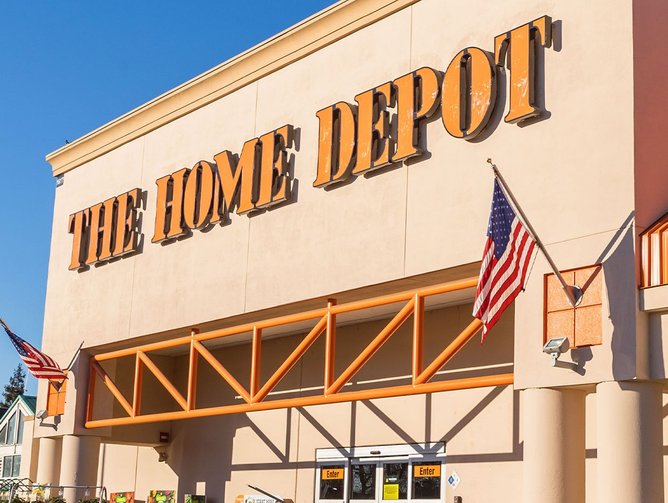How The Home Depot Became a Leader in Sustainable Forestry

Behind most products you see at The Home Depot, there are forests.
Recognising this, the world’s biggest home improvement retailer takes its responsibility to those forests seriously.
Founded in 1978 by Bernie Marcus and Arthur Blank, The Home Depot has grown to become one of the largest and most recognisable retailers in the US, with 2,200 stores worldwide and annual revenue of US$157.29 billion.
“While our business has changed since 1979, our values remain the same,” CEO Ted Decker said in the company’s recently-released forestry report.
“One of those values is Doing the Right Thing, and as the world’s largest home improvement retailer, we’re in a unique position to enact positive change through our sustainable forestry initiatives.”
Already leading the industry charge in FSC-certified wood product sales in the US, most wood sourced by The Home Depot hails from regions with sustainable forests.
But the company knows it can always do more.

Recently releasing its 2023 Sustainable Forestry Report, The Home Depot announced a set of strengthened standards and commitments designed to protect more tropical ecosystems, including those most at risk – and the rich biodiversity the planet needs to thrive.
This means that by the end of FY26, all wood products sourced to the US and Canada from an additional set of high-risk regions will need to bear third-party certification or be plantation-grown.
This covers most of Home Depot’s overall wood sourcing and includes regions such as Cerrado in Brazil, home to 5% of the planet’s animals and plants, as well as Gran Chaco and Atlantic Forest biomes in South America.
Described by Green Century Funds as a “welcome step in the right direction”, the new policy is an expansion of the retailer’s long-established and continued strategy in sustainable sourcing.
Three Decades of Sustainable Wood Sourcing
It’s been 30 years since the first certified-sustainable wood shelving arrived in The Home Depot aisles – and 25 years since the company issued its Wood Purchasing Policy.
Recognising the positive impact Home Depot could achieve by working with suppliers that adhere to set standards of forest management and tree species selection, the policy committed to stop buying from endangered regions by the end of 2002 – with a particular focus on lauan, cedar and redwood.
In the 25 years since, the US$369 billion business has established supply chain protocols to ensure visibility into where its products come from and to safeguard the health of these forests, updating its policy along the way.

One example is the company’s preference for certified wood.
Wood is considered ‘certified’ if it has been managed and harvested under strict guidelines and monitored by a third party to ensure sustainable practices are allowed.
Since 2018, the retailer has required Forest Stewardship Council (FSC) certification for wood sourced from regions most at risk for deforestation, specifically the Amazon basin, the Congo basin, Papua New Guinea and the Solomon Islands.
Offering FSC-certified products across various categories, from board lumber to doors to patio furniture, the company strives to choose suppliers that have secured one or more recognised certifications – including FSC, Sustainable Forestry Initiative (SFI) and Program for the Endorsement of Forest Certification (PEFC).
Among achievements, Home Depot has transitioned many vendors to FSC-certified wood in America – working with vendors to shift more than 80% of its lauan wood used in the production of doors to wood from more sustainable sources – and moving more than 90% of its cedar purchases to second- and third-growth forests in the US.
The company has also significantly increased its FSC-certified redwood, with its two primary suppliers both delivering a strong procurement preference for FSC-certified wood.
One FSC-certified supplier, Mendocino Redwood Company (MRC), is an example of how private forest management can protect and restore the ecological attributes of the forest. With around 228,800 acres of forestland, MRC harnesses a management technique to create a wildfire-resilient forest.
Wildfire-resilient forests can continue to be carbon sinks and aid in global efforts to fight climate change. They also maintain wildlife habitat for various species, and water quality.
Among other certified and preferred suppliers, Canada-based J.D. Irving (JDI) has proven that sustainable forestry management is good not just for trees, but also for the planet and business.
With lumber products and forestry activities certified by SFI and woodlands certified by FSC, JDI’s entire forest products value chain is carbon negative, absorbing more carbon than it emits – a study by the University of New Brunswick finds.
Guided by an 80-year management plan that incorporates habitat, conservation, recreation, carbon stocks and timber supply, the company grows and plants roughly 18 million trees (1 billion since 1957).
Forests Critical in fight Against Climate Change
Forests and forest products are critical in the fight against climate change.
From replacing carbon-intensive building materials and plastics, to providing green energy, to sequestering carbon through well-managed forests, the woods matter.
As essential ecosystems, providing habitats for most of the planet’s species and livelihoods for nearly one billion people, forests are important.
And healthy forests play a crucial role in mitigating climate change. They act as powerful carbon sinks, meaning they absorb and store carbon dioxide .
Estimates show that globally, between 2001-2019, forests absorbed twice as much carbon as they emitted, or 8.6 billion metric tonnes of CO2 per year, according to the UNDP.
According to findings from the Intergovernmental Panel on Climate Change (IPCC), the agriculture, forestry, and other land use (AFOLU) sector can provide up to 30 percent of the GHG emissions reductionsneeded to limit global warming to 2°C, at a relatively low cost.
- ‘Client Zero’ IBM’s Guide to Using AI for SustainabilitySustainability
- Could AI and Data Help Nestlé Make Coffee Climate Resilient?Sustainability
- Businesses are Getting Sustainability Dangerously WrongSustainability
- Why EY is Warning US & Americas Companies on SustainabilitySustainability






